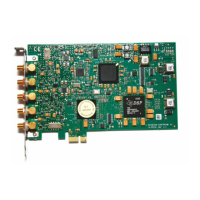WAVECOM Decoder W74PC, W-PCI/e, W-CODE, W-CLOUD Manual V9.1.0 Transmission Modes
171
By selecting 122.5 Bd or Variable rate reception is started. Selecting the Polarity will determine normal
or inverse screen color.
In the Demodulator submenu the special function fields AM-Gain and AM-Offset are placed. Centering
of the signal deviations on the bar graph is controlled by adjusting AM-Offset. In addition maximum de-
viation is required on the bar graph. This is done by adjusting AM-Gain. It should be noted that these two
adjustments are influenced by each other.
Right-click on the image to open the Zoom menu, which allows the user to zoom in and out on the image.
FLEX
FLEX is another mode used for pager transmissions. It is often combined with POCSAG and GOLAY/GSC.
FLEX specifies 4 different transmission modes:
First, a preamble is sent, which identifies the modulation type. Next, a Frame Information Word (FIW) is
transmitted to identify the cycle and frame number. The preamble and FIW are always transmitted as
FFSK 1600 Baud. After the preamble and FIW, the message is sent with the modulation according to the
preamble.
The message block contains the information and consists of 11 blocks. Each block carries 8 words with 32
bits each. The length of a message block is always constant.
The basic modulation type FFSK, 1600 Baud can transmit one message block. With a higher modulation
type, it is possible to transmit four complete and independent message blocks. To distinguish between the
different message blocks, they are called phase A to D.
A message block contains a lot of smaller messages. 8 different message types are used with FLEX:
Alphanumeric / Secure messages for text based messages
Three types of numeric messages
Binary messages
Tone Only messages
Instruction messages for configuring the pager devices
FM-HELL
FM-HELL is a synchronous picture telegraph system like FELDHELL. It is using a virtual matrix laid down
on the character to be transmitted. The pixels of the matrix are then sent, scanning the matrix from the

